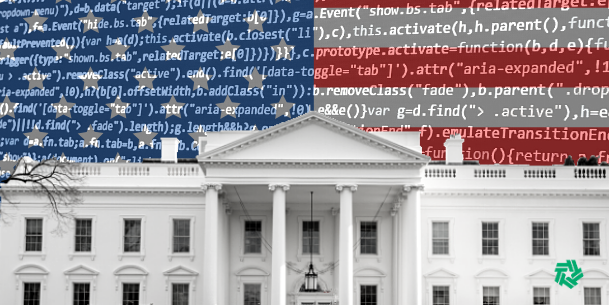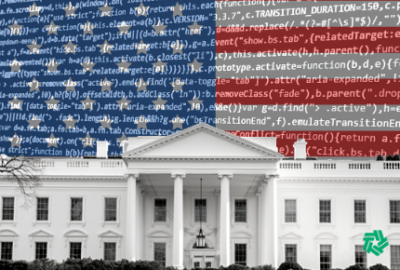In a reversal of roles, Congress tells the TMF to ‘show me the money’
Despite a $500 million request from the White House and the House initially appropriating $50 million for fiscal 2022, lawmakers decided not to add any new funding...
Best listening experience is on Chrome, Firefox or Safari. Subscribe to Federal Drive’s daily audio interviews on Apple Podcasts or PodcastOne.
For the Technology Modernization Fund, the bank of mom and dad is closed for fiscal 2022.
If you have kids, you probably grasp the message Congress sent to the TMF in the omnibus bill passed last week.
Lawmakers zeroed out the TMF after the White House requested $500 million and the House, at one point, had allocated $50 million for IT modernization and cybersecurity improvements.
“The only reason TMF did not receive any funding in the omnibus is they still have more than $700 million in unobligated funds from the American Rescue Plan. This represents a significant surplus and if we provided any additional funding, they would be unable to spend it all before the end of 2022,” said a staff member for Rep. Mike Quigley (D-Ill.), chairman of the Appropriations Subcommittee on Financial Services and General Government, in an email to Federal News Network. “We don’t think the General Services Administration can obligate all the ARPA money in 2022, and secondarily, this program is meant to be a revolving fund to address IT modernization and we are giving to this program to work as intended. We feel it has been adequately funded for 2022.”
Congress allocated $1 billion last March and it has only spent more than $320 million. The total amount also includes leftover funding from previous fiscal years filling the fund’s coffers.
The TMF Board, led by the Office of Management and Budget and run by GSA, made two recent awards for a total of $9 million to the Postal Regulatory Commission and the Selective Service System to modernize customer facing applications.
These “loans” followed more than $311 million in awards last fall to four agencies for cybersecurity and citizen services initiatives.
More data, more results needed
Congress’ decision not to add more money to the TMF is both understandable, and shortsighted.
Like a child whose hand is always out, there is a limit to how often mom and dad can open their wallet, especially without seeing some results from their spending.
In the year since Congress allocated $1 billion for the TMF, the board has made only eight awards to six agencies. Lawmakers are rightfully hesitant to add more money to the TMF at a time when there are hundreds or thousands of competing needs.
On the other hand, with more than 130 proposals from more than 40 agencies totaling $2.5 billion in projects, the TMF Board is overwhelmed by demand. And lawmakers need to recognize accelerating many of these modernization efforts will benefit their constituents so their support of the TMF is key.
And while it’s clear the TMF Board has taken a measured approach to “loaning out” funds, the signal it needs to send to Congress is $1 billion was great, but agencies need so much more. OMB estimated in 2016 that agencies had more than $7 billion in technical debt coming due.
Add to that technical debt, the ever-changing cyber environment, with new threats every day, agencies systems and data face high risks and not a clear path to address them without new funding.
Mike Hettinger, the president of Hettinger Strategy and a former staff director for the House Oversight and Government Reform Subcommittee, said the board and OMB need to do more to help Congress understand the value of the TMF.
“Part of it is marketing. There is a lot of good stuff happening. The TMF is funding really good, smart projects that need to be modernized. Maybe they need to get on their soap box and say, ‘look this is what we are doing,’” Hettinger said during the Roadmap to Modernization event sponsored by NextGov on March 10. “I think it’s important that people who maybe aren’t paying attention day-to-day on this stuff can have something they can point to and see the 17 or 18 projects that have been funded” are making progress.
Blame to share for the lack of support
He said Congress doesn’t easily understand these non-traditional IT investments so the simpler OMB, GSA and industry can make it for them to see the difference the funding is having on citizens and businesses, the more likely they are to support continued funding.
Rep. Gerry Connolly (D-Va.), chairman of the Oversight and Reform Subcommittee on Government Operations and the most vocal supporter of TMF funding, said the lack of support in the appropriations bills have been a “perennial disappointment.”
“While I wish more robust funding for IT was in this package, we will continue to advocate for additional IT funding in future packages, and help educate Congress about the power of IT investment,” he said in a statement.
Part of the disappointment does fall on the lap of OMB and the board. The slow pace of awards is frustrating agency chief information officers, many of which submitted proposals 6-9 months ago.
The TMF Board, which is made up of federal executives from across the government who are reviewing proposals in addition to their full time jobs, didn’t have the necessary support to deal with the onslaught of proposals.
Raylene Yung, the executive director of the TMF program management office at GSA, said that is about to change.

The TMF program management office is growing to meet the challenge of helping the board loan out the remaining $700 million. Yung said there are 15 people in the program office today and more experts in developing public facing digital services, scaling technology, cybersecurity and operations support are on their way.
Future remains bright
And now four years into the TMF, Young said the initiative is giving the board a better understanding of where the modernization challenges continue to exist.
“In many ways the TMF not only has this really interesting bird’s eye view of what dozens of federal agencies are looking to modernize and how they want to approach it, but we also have this huge demand that far exceeds the capacity to invest. I think all of that, just the sheer number of proposals, the complexity of the projects, the numbers of agencies and the number of investments we are supporting has made it that the whole TMF program has really had to evolve, change and think more about providing that high volume and high quality support at significant scale,” Yung said at the event. “We really had to change basically everything about our operations, from the way the team is staffed to the way we engage with the boards and a lot of different processes and systems in how we examine and evaluate proposals.”
Hettinger said despite not getting any new money for 2022, he believes the future of the TMF remains bright as long as the board and OMB continue to demonstrate the impact of the funding.
“We need to recognize there are challenges and part of the challenge is on the funding side and part of it is being able to be transparent and demonstrate success,” he said. “This was supposed to be a rolling investment and TMF should not be a stagnant billion dollar fund that runs out of money eventually. We need continued investment from Congress, continued investment from the agencies. We need them to want to participate and I think some of the changes to the payback model are good. Now that we’ve got a billion dollars there is a lot of agency interest in this and now we have to find a way to demonstrate success so that Congress gives the fund more money or that more agencies participate and return money to the fund and we can continue to make rolling investments. All of those things have to come together to make sure the program can continue to be successful.”
Copyright © 2025 Federal News Network. All rights reserved. This website is not intended for users located within the European Economic Area.
Jason Miller is executive editor of Federal News Network and directs news coverage on the people, policy and programs of the federal government.
Follow @jmillerWFED





